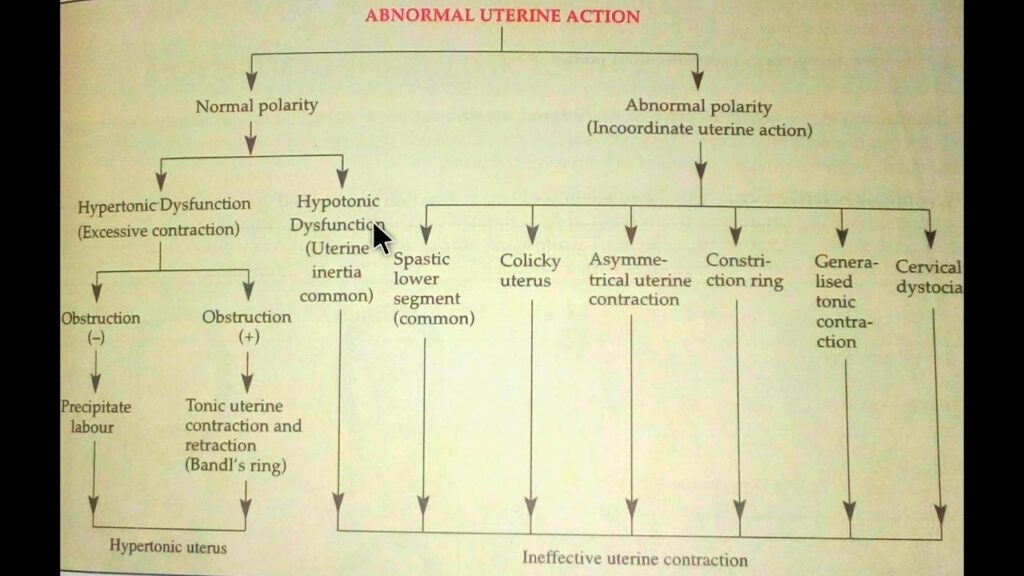Uterine inertia, a failure of the uterus to contract effectively during parturition, is a significant cause of dystocia in both veterinary and human obstetrics. Characterized by weak or absent uterine contractions, uterine inertia can be classified as either primary—where labor fails to initiate or progress—or secondary, where contractions cease after initial effectiveness due to exhaustion or obstruction.
This article presents comprehensive prevention strategies for uterine inertia, emphasizing early detection, proper labor management, hormonal support, and optimal maternal care. Effective prevention is critical to reducing perinatal morbidity and mortality, minimizing surgical interventions, and improving outcomes for both the dam and the offspring.

Understanding Uterine Inertia: Causes and Classifications
Primary Uterine Inertia
Primary uterine inertia arises when myometrial contractions are insufficient or absent from the onset of labor. It is commonly associated with:
- Hormonal imbalances (particularly insufficient oxytocin or prostaglandin activity)
- Overstretching of the uterus due to multiple fetuses or large fetal size
- Genetic predisposition, especially in certain breeds (e.g., brachycephalic dogs)
- Inadequate calcium or energy levels in the dam
Secondary Uterine Inertia
Secondary inertia results from uterine exhaustion due to prolonged labor or mechanical obstruction such as fetal malposition or pelvic disproportion. In these cases, the uterus initially contracts normally but subsequently becomes fatigued.
Early Detection and Risk Assessment
Antenatal Monitoring
To prevent uterine inertia, vigilant prenatal care is essential. Risk factors such as multiparity, obesity, poor body condition, and breed-specific predispositions must be identified early.
- Ultrasound Evaluation: Monitoring fetal development and uterine size can help detect potential dystocia risks.
- Nutritional Status: Ensure optimal maternal nutrition and body condition score throughout gestation.
Predictive Indicators
The following signs may indicate potential uterine inertia and warrant closer supervision:
- Overdue gestation periods
- Lack of nesting or restlessness near term
- Prolonged stage I labor without progression to active contractions
- No response to external stimuli or oxytocin therapy
Nutritional and Hormonal Management to Prevent Uterine Inertia
Calcium and Energy Balance
Proper calcium and glucose levels are crucial for effective uterine contractions.
- Calcium Supplementation: Hypocalcemia contributes to weak uterine tone. Supplementation should begin prepartum in animals with known risks.
- Energy Support: Adequate carbohydrate intake and energy supplementation help sustain uterine contractility during prolonged labor.
Hormonal Optimization
- Oxytocin Responsiveness: In primary uterine inertia, sensitivity to oxytocin may be diminished. Timely and controlled administration of oxytocin can enhance contractions, but only when obstruction is ruled out.
- Prostaglandin Regulation: Ensuring prostaglandin production is critical for cervical ripening and uterine activation. Improper luteolysis can delay parturition.
Veterinary Obstetric Interventions
Timely Medical Support
Proactive intervention during labor can help prevent the onset or worsening of uterine inertia.
- Manual Examination: Ensure cervical dilation and absence of physical obstructions before administering uterotonic agents.
- Fluid Therapy: Supportive fluids with dextrose and calcium gluconate can restore metabolic function and contractile strength.
Oxytocin Protocols
Use oxytocin judiciously under veterinary supervision:
- Start with low doses (0.5–2 IU IM or SC) and observe for contractions.
- Repeat every 30–60 minutes as needed, not exceeding safe dosages.
- Always confirm fetal and maternal readiness for delivery before use.
Parturition Management Techniques
Controlled Environment
Stress can inhibit oxytocin release. Ensuring a calm, clean, and safe birthing environment aids in natural hormonal progression.
- Minimize Disturbances: Allow the dam privacy and avoid excessive handling during early labor.
- Temperature and Lighting: Keep the birthing area warm, dimly lit, and quiet to reduce anxiety.
Proper Assistance Timing
Avoid premature intervention. Assistance should only be provided when:
- Active labor persists beyond 30 minutes with no progress
- More than 2 hours have passed since the birth of the last fetus
- There is visible fetal distress or maternal exhaustion
Surgical Considerations
Cesarean Section
In cases where medical and manual methods fail or when fetal or maternal life is at risk, cesarean delivery becomes necessary.
- Indications: Absolute uterine inertia, obstruction, or non-response to therapy.
- Preparation: Immediate IV fluids, pre-oxygenation, and anesthetic protocols to reduce maternal stress.
Breed-Specific Considerations
Certain breeds are predisposed to uterine inertia due to anatomical or genetic factors.
- Canines: Bulldogs, Boxers, and Dachsunds frequently exhibit uterine inertia and require planned monitoring or elective cesareans.
- Felines: Although less common, uterine inertia in queens may arise due to stress or nutritional deficiency.
Postpartum Care and Prevention of Recurrence
- Monitor for Retained Placentas: A retained placenta can lead to uterine infection and impact future fertility.
- Lactation Support: Nutritional demands increase postpartum. Continued calcium and energy support are necessary.
- Recordkeeping: Document labor duration, interventions, and outcomes to improve future parturition planning.
The prevention of uterine inertia hinges on a multifaceted approach involving proactive maternal care, balanced nutrition, hormonal regulation, and timely obstetric intervention. Identifying at-risk individuals during pregnancy, monitoring closely during labor, and applying evidence-based management protocols ensures better maternal and neonatal outcomes.
With rigorous prenatal assessments and expert intervention, we can drastically reduce the incidence of uterine inertia and its associated complications in both veterinary and human obstetrics.